ASA – White – with spool – Bambu Lab
Product Features
- Exceptional UV resistance
- Exceptional temperature resistance
- High impact strength and durability
- Outdoor use for long-term purpose
- Comes with a high temperature reusable spool
- Diameter: 1.75 mm +/- 0.03 mm
- 1kg
Warnings for use:
- Compatible with AMS system
- Inclogger needed for open printers
Bambu ASA
Bambu ASA is an extremely durable material that features outstanding resistance to UV rays, weathering, mechanical and thermal influences. Its unique combination of properties makes it an ideal material for printing exterior patterns (plant signs, mailboxes, weathervanes, etc.) and structural parts that require long-term exposure to challenging outdoor conditions.
Exceptional weather and UV resistance
Bambu ASA offers outstanding resistance to UV rays, oxidation and ageing, providing effective protection against breakage and colour deterioration in long-term outdoor use.
Robust and durable
It is suitable for outdoor applications and regular structural requirements due to its robustness and high impact strength.
Better temperature resistance
Compared to conventional PETG or ABS, Bambu ASA can retain its shape even at temperatures of 100°C.
Frequently Asked Questions
1. What is the difference between ABS and ASA?
| ABS | ASA | |
| Composition: | acrylonitrile – butadiene – styrene | acrylonitrile – styrenes – acrylates |
ASA is a modified version of ABS that contains an additional acrylate component that improves its adaptability to weather conditions and UV resistance.
ASA retains the impact resistance and workability of ABS while providing better resistance to fading, yellowing and degradation from exposure to sunlight. Both types can emit pungent and unpleasant odors during printing, However, the pungent odour of ASA is significantly milder than that of ABS.
2. What is the difference in applications between ABS and ASA?
Due to its increased weather resistance and color stability, ASA is ideal for outdoor applications such as vehicle exteriors, signage and outdoor equipment. ABS is a versatile material with excellent mechanical properties that is commonly used for indoor applications.
3. What are the similarities between ABS and ASA?
In terms of physical and mechanical properties, both types are characterised by good impact resistance and high tensile strength, with almost equal levels of strength, toughness and toughness. Both ABS and ASA can give off pungent and unpleasant odours during printing and the same tendency to distort and require a closed printer when printing large size models and/or high fill densities.
Comparison of parameters
| ABS | ASA | PC | |
| Composition: | acrylonitrile – butadiene – styrene | acrylonitrile – styrenes – acrylates | Polycarbonate |
| Compatibility with Hotend: | All sizes/materials | ||
| Compatibility of the build plate: | Engineering pad, high temperature pad, textured PEI pad | ||
| AMS Compatibility: | Yes | Yes | Yes |
| Glue: | Bambu Liquid Glue/Glue Stick | Bambu Liquid Glue/Glue Stick | Glue stick |
| Drying before use: | Recommended | Recommended | Required: |
| Smell during printing: | Pungent smell | Relatively mild acrid odour | Mild odour with a taste of phenol |
| Durability (impact strength – XY): | 39.3 kJ/m² | 41.0 kJ/m² | 34.8 kJ/m² |
| Strength (flexural strength – XY): | 62 MPa | 65 MPa | 108 MPa |
| Stiffness (flexural modulus – XY): | 1880 MPa | 1920 MPa | 2310 MPa |
| Layer adhesion (impact strength – Z): | 7.4 kJ/m² | 4.9 kJ/m² | 9.0 kJ/m² |
| Heat resistant(HDT, 0.45 MPa): | 87 ℃ | 100 ℃ | 117 ℃ |
| Absorption rate of saturated water / % (25 °C,55% RH): | 0.65% | 0.45% | 0.25% |
Compatibility of accessories
| Recommended | Not recommended | |
| Backing: | Engineering pad, high temperature pad or textured PEI pad | Cool pad |
| Hotend: | All sizes / materials | / |
| Glue: | Bambu Liquid Glue
Glue Stick |
/ |
RFID for smart printing
All print parameters are embedded in the RFID, which can be read by our AMS (Automatic Material System). No more tedious setup steps.
| Recommended print settings | |
| Drying settings (shock drying oven): | 80 °C,8 h |
| Printing and maintaining the humidity of the container: | < 20% RH (Sealed, with desiccant) |
| Nozzle temperature: | 240 – 270 °C |
| Bed temperature (with adhesive): | 80 – 100 °C |
| Print speed: | < 250 mm/ |
| Physical properties | |
| Density: | 1.05 g/cm³ |
| Vicat softening temperature: | 106 °C |
| Heat deflection temperature: | 100 °C |
| Melting temperature: | 210 °C |
| Melting index: | 7.0 ± 0.8 g/10 min |
| Mechanical properties | |
| Tensile strength: | 37 ± 3 MPa |
| Fracture extension rate: | 9.2 ± 1.4 % |
| Bending module: | 1920 ± 130 MPa |
| Bending force: | 65 ± 5 MPa |
| Impact Force: | 41.0 ± 2.3 kJ/m² |
What’s in the box?






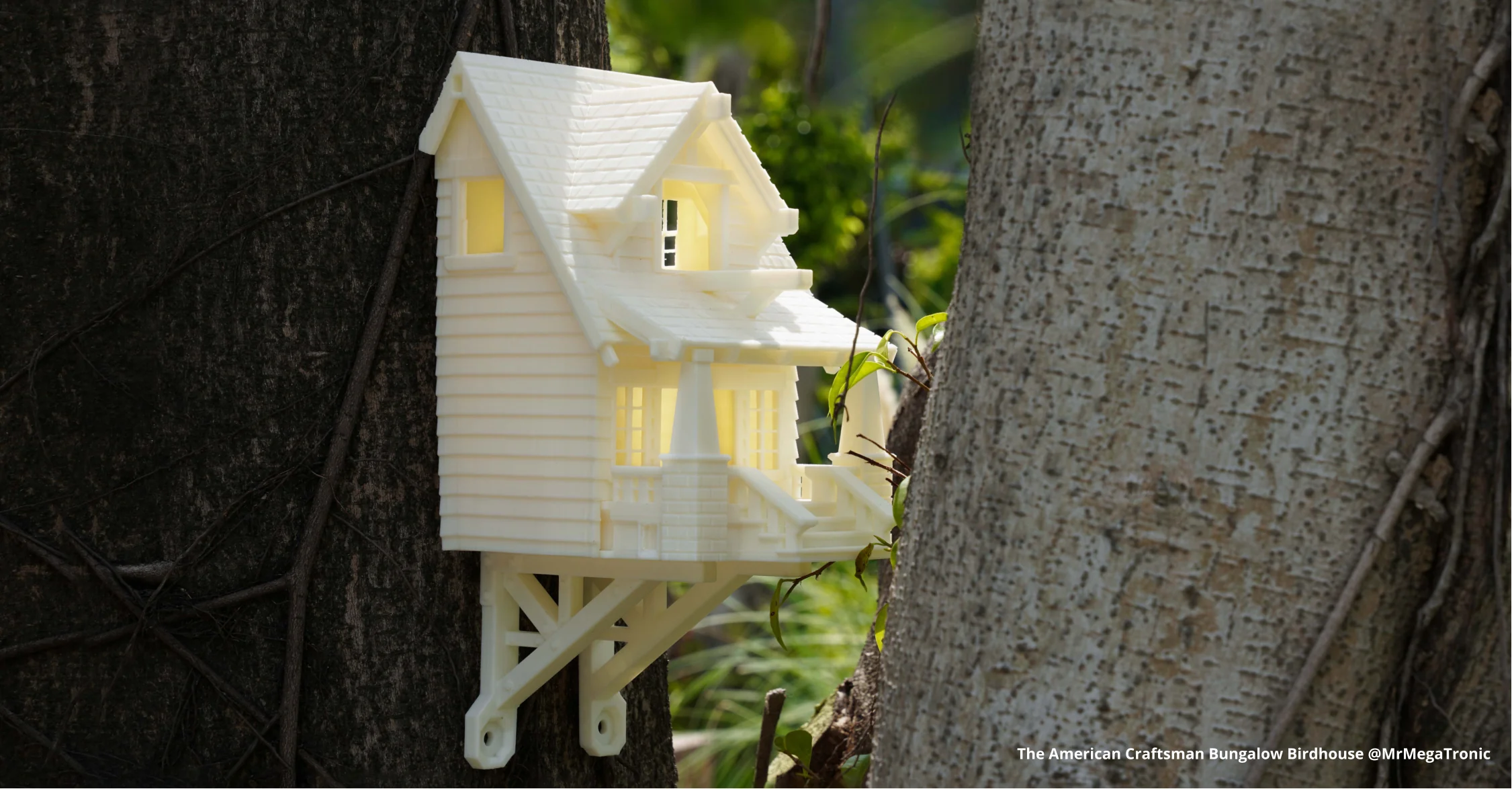











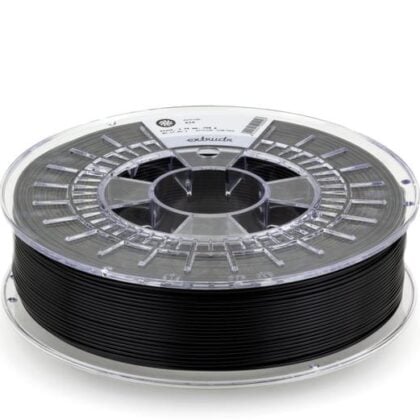

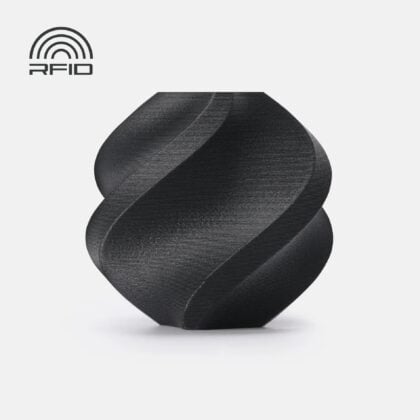
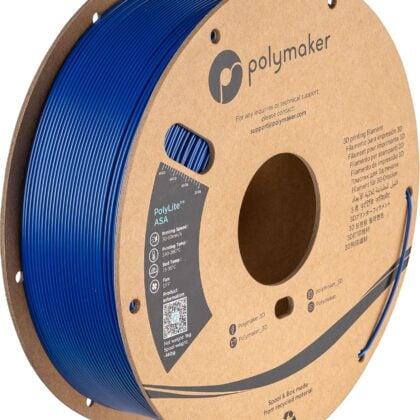
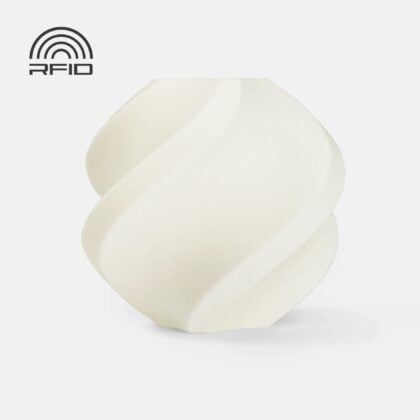
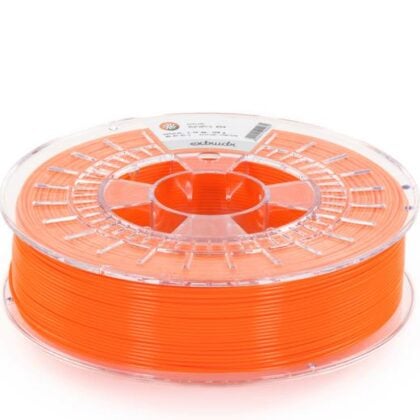



There are no reviews yet.